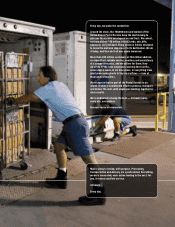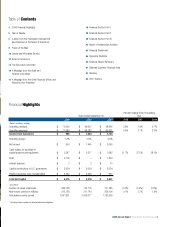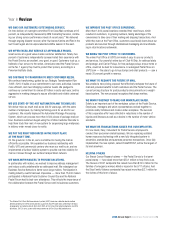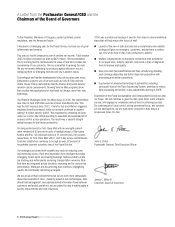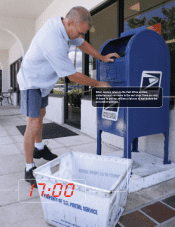US Postal Service 2006 Annual Report Download - page 12
Download and view the complete annual report
Please find page 12 of the 2006 US Postal Service annual report below. You can navigate through the pages in the report by either clicking on the pages listed below, or by using the keyword search tool below to find specific information within the annual report.
10 | 2006 Annual Report United States Postal Service
Connecting Customers through Quality and Affordable Service
We are driven to perform our best for our customers.
With a fully engaged workforce committed to success, we’re keeping
service and productivity levels high while working to reduce costs.
We’re more efficient than ever in all our operational and business
processes. Total factor productivity (TFP) has increased for seven straight
years. TFP includes all factors of production and measures the growth
in the ratio of resources we use — the inputs — to the products and
services they produce — the outputs.
Every year our delivery network grows by almost 2 million new homes and
businesses. In 2006, we faced additional upward cost pressures from
rising fuel prices and inflation-triggered benefit cost increases outside our
control. We aggressively pursue reducing costs that are under our control.
We’re using automation to remove processing costs. We’re driving produc-
tivity increases through standardization. With one of the largest logistics
and distribution networks in the world, we’ve introduced more flexibility
in our transportation network. We’re working closely with our customers
and industry partners to better align customer mail preparation with postal
operations so it results in the lowest handling costs for both.
As new service offerings have been added and new technologies have
become available, our delivery network has been adjusted to increase
efficiency. In today’s network, plants generally process all classes of
mail. However, some plants have specialized responsibilities, linking
transportation and distribution for specific classes or types of mail. We’re
transitioning from these single-product networks to a more efficient
network designed to handle multiple products.
We’ll continue to make advances in our automation capabilities, including
the development of a system to get flat-shaped mail ready for delivery in
the order that carriers work the streets. Enhancements to commercial mail
acceptance will dramatically cut paperwork and streamline payment.
We’ll continue to improve address quality to dramatically reduce undeliver-
able-as-addressed mail, expand the use of new barcode technology and
mail tracking tools, and improve workforce planning.
We’re driven to cut costs to keep mail affordable — so we can continue to
provide the service that connects all Americans.
We’re working closely with our customers and industry partners to better
align customer mail preparation with postal operations so it results in the lowest
handling costs for both.



